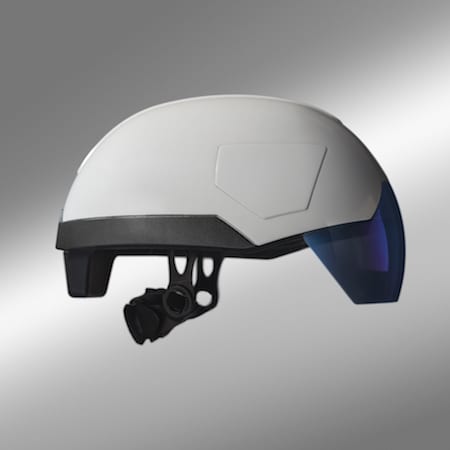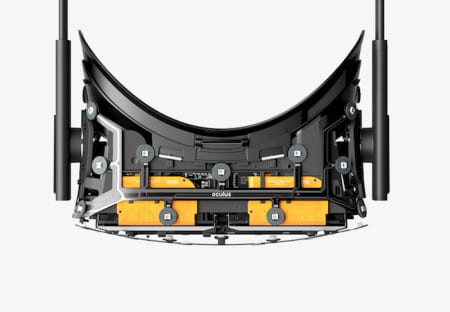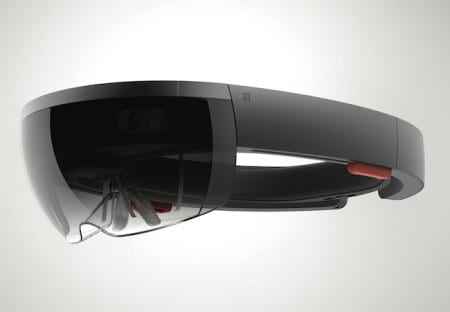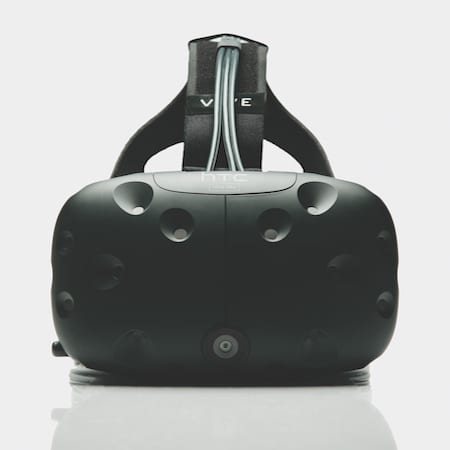While virtual reality is still in its early days, advances in this technology hold exciting potential for the field service industry. For starters, emerging virtual and augmented reality tools are truly hands-free and can deliver direct access to on-the-job training and instructional videos. They may even increase safety and decrease costs by training techs how to properly use expensive equipment or to work in a dangerous environment through simulations.
We took a look at five new virtual reality headsets that may transform field service toolkits in the not-so-distant future:
Daqri Smart Helmet
 Overview: The Daqri Smart Helmet is the hardhat of the future. It uses Daqri’s augmented reality software to show the wearer information about their surroundings to improve decision-making. For example, if a worker needs to fix a pipe, the helmet would guide them through step-by-step instructions complete with 3D models, images, documents, or videos.
Overview: The Daqri Smart Helmet is the hardhat of the future. It uses Daqri’s augmented reality software to show the wearer information about their surroundings to improve decision-making. For example, if a worker needs to fix a pipe, the helmet would guide them through step-by-step instructions complete with 3D models, images, documents, or videos.
Tech Specs: This ultra-lightweight helmet features a thermal camera, see-through augmented reality display, 360-degree views, and an Intel Core m7 processor. The helmet also acts a hardhat replacement, complete with safety glasses.
Potential uses: This helmet has direct potential for use within field service, particularly within the oil and gas, heavy automation, or manufacturing industries.
Cost: $5,000-$15,000 per unit; expected to go on sale March 2016
Oculus Rift
 Overview: Oculus Rift uses state-of-the-art displays, optics, and a complex tracking system to create a virtual reality experience.
Overview: Oculus Rift uses state-of-the-art displays, optics, and a complex tracking system to create a virtual reality experience.
Tech Specs: The lightweight headset has an adjustable faceplate and hand-held controllers, and connects to a PC through a 10-foot-long HDMI cable.
Uses: While gaming is the primary buzz around Oculus Rift, it also has many educational applications. This immersive headset could allow techs to practice tasks via simulations, or allow them to see into difficult-to-reach places in the field with small cameras.
Cost: $599; expected ship date of July 2016
Microsoft HoloLens
 Overview: Microsoft’s HoloLens is the cream of the crop when it comes to virtual reality headsets. The headset is a cordless, holographic powerhouse with more computing juice than your average laptop. It enables high-definition holograms that you can interact with through gestures, gaze, and voice.
Overview: Microsoft’s HoloLens is the cream of the crop when it comes to virtual reality headsets. The headset is a cordless, holographic powerhouse with more computing juice than your average laptop. It enables high-definition holograms that you can interact with through gestures, gaze, and voice.
Tech Specs: The headset features external cameras, built-in speakers, sensors to capture your environment, and advanced optics. It is passively cooled without fans, and is supported by a Windows 10 platform, but does not require a PC to connect.
Potential uses: HoloLens offers possibilities for both training and on-the-job use. Partnering with Trimble, Microsoft is working to bring 3D models to life for architecture and construction industry professionals.
Cost: $3,000; developer’s version to launch in June 2016
Samsung Gear VR
 Overview: Samsung’s headset is a mobile virtual reality solution designed for the everyday consumer.
Overview: Samsung’s headset is a mobile virtual reality solution designed for the everyday consumer.
Tech Specs: To use the headset, simply connect your smartphone and navigate using the touchpad at your temple. While this headset is limited in terms of software — it only works with Galaxy smartphones — it is inexpensive, completely wireless, and portable.
Potential uses: With its low cost and usability, the Gear VR may be a realistic option for service organizations. It could provide quick access to manuals, instructions, or just-in-time learning.
Cost: $99; available now
HTC Vive Pre
 Overview: The Vive Pre is HTC’s second-generation virtual reality headset. This unique device allows the wearer to walk around and interact with the world around them.
Overview: The Vive Pre is HTC’s second-generation virtual reality headset. This unique device allows the wearer to walk around and interact with the world around them.
Tech Specs: The Vive Pre headset connects to a PC via cable and uses laser pointers to track the wearer’s physical location in a 15′ x 15′ space. It features 360-degree views, two 1080×1200 display screens, and hand controllers that move seamlessly with the wearer’s hands in a virtual world.
Potential uses: HTC and partner Valve are working with companies like Google and HBO to help bring the broader vision of virtual reality to life beyond gaming. With the Vive Pre, field service techs could fully immerse themselves in simulated learning environments.
Cost: Unknown; pre-orders begin late February 2016


Share this: